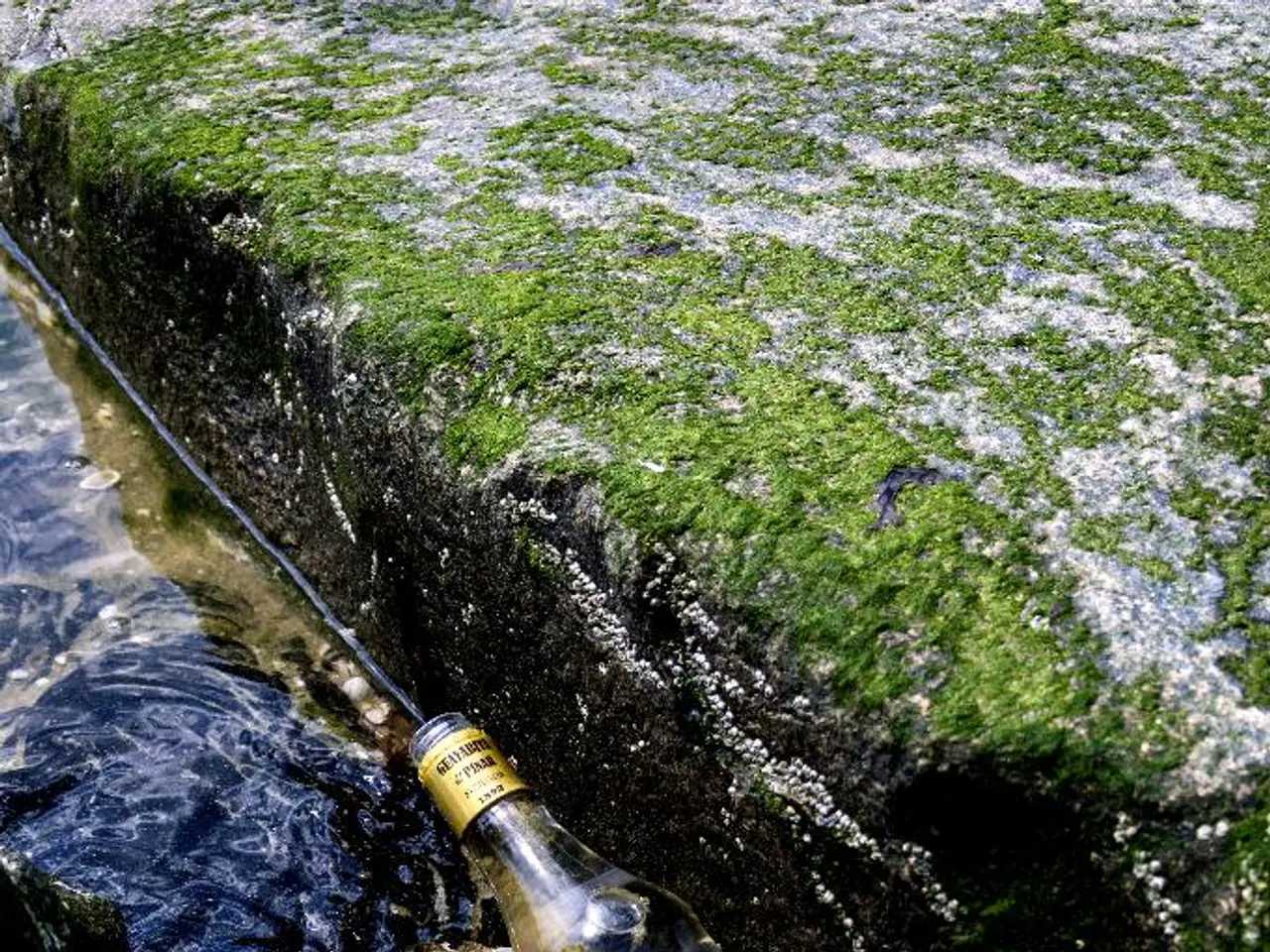Alert from the Consumer Protection Ministry: Maintain caution against potentially harmful blue algae blooms - Consumer Affairs Ministry Issues Warning on Blue Whales
Headline: Brandenburg Consumer Protection Ministry Issues Warning About Blue-Green Algae in Bathing Waters
The Brandenburg Consumer Protection Ministry has issued a warning about the potential risks associated with blue-green algae (cyanobacteria) in bathing waters, particularly in light of the forecasted high temperatures.
Blue-green algae can reproduce rapidly in summer temperatures and under conditions of prolonged high temperatures and strong sunlight. These algae can produce toxic substances, and their growth can lead to sudden blooms.
The warning advises caution when using bathing waters due to the risk of blue-green algae. It's important to note that the conditions in bathing waters can vary, with some potentially posing a higher level of concern.
Individuals are encouraged to avoid contact with water where visible blooms are present. This includes not swimming, wading, drinking, or using watercraft in affected waters. If contact occurs, washing skin and clothing thoroughly with soap and water is recommended. Pets and livestock should also be kept away from these waters, as they are at risk.
Fishing may be allowed, but with caution. Fish should be cleaned well, and guts discarded. Shellfish consumption from these waters is discouraged. Boiling water contaminated by algae does not remove toxins, so it should not be used for cooking or cleaning with bloom-affected water.
To identify blue-green algae blooms, look for discolored water, often green, blue-green, or turquoise in patches or mats on the water’s surface. Visible scums or slicks that may resemble spilled paint or pea soup are signs of an algal bloom. The water may have an unusual or unpleasant odor. Blooms are often accompanied by an accumulation of algae near shorelines or in slow-moving water.
Authorities often issue advisory levels such as Warning Advisories (avoid swimming, do not ingest water, avoid algae scums when boating) or Danger Advisories (sometimes leading to temporary closure of water bodies), depending on toxin levels measured in the water.
In summary, the key guideline is: "When in doubt, best keep out." Avoid any water with visible blue-green algae blooms to protect health and pets.
Local accumulations of blue-green algae can change quickly, depending on factors like wind direction or water flow. It's up to individuals to decide whether it's safe to swim in a particular body of water.
[1] Blue-green algae (cyanobacteria) and human health
[2] Cyanobacteria (Blue-Green Algae) in Freshwater
[3] Health Effects of Blue-Green Algae (Cyanobacteria)
[4] Blue-green algae (cyanobacteria) in recreational waters
[5] Blue-green algae (cyanobacteria) in the UK
- The Community policy should consider implementing educational programs about the risks of blue-green algae (cyanobacteria) and their potential impact on health-and-wellness, including fitness-and-exercise and nutrition.
- In the context of environmental-science, it's crucial to monitor the growth of blue-green algae (cyanobacteria) in freshwater bodies as a part of general-news reporting, given their potential environmental and health implications.
- Vocational training programs in science fields could prioritize courses on the study of blue-green algae (cyanobacteria) and their effects on aquatic ecosystems, as this knowledge could contribute to the development of solutions to mitigate their harmful impacts.





